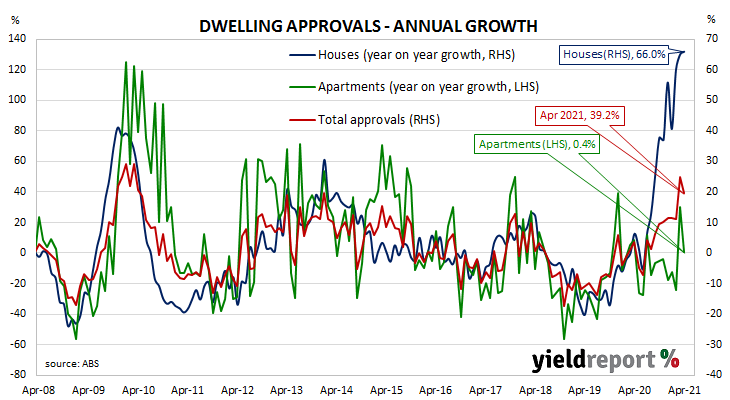Summary: Home approval numbers fall in April; slightly lower than expected figure; “largely confined to high-rise”; economists divided on outlook; house approval up, apartment approvals drop; non-residential approvals drop but still up on annual basis.
Approvals for dwellings, that is apartments and houses, had been heading south since mid-2018. As an indicator of investor confidence, falling approvals had presented a worrying signal, not just for the building sector but for the overall economy. However, approval figures from late-2019 and the early months of 2020 painted a picture of a recovery taking place, even as late as April. Subsequent months’ figures then trended sharply upwards.
The Australian Bureau of Statistics has released the latest figures from April and total residential approvals fell by 8.6% on a seasonally-adjusted basis. The drop over the month was slightly lower than the 10.0% which had been generally expected and in contrast with March’s 18.9% rise after revisions. Total approvals increased by 39.2% on an annual basis, a slowdown from the previous month’s revised figure of 50.0%. Monthly growth rates are often volatile.
Westpac senior economist Matthew Hassan said weakness was “largely confined to high-rise units rather than appearing in segments where unwinding pull-forward effects from the expiring HomeBuilder scheme would impact.”

Commonwealth bond yields moved lower on the day, ignoring flat or slightly higher US Treasury yields at the close of trading on Tuesday morning. By the end of the day, the 3-year ACGB yield had slipped 1bp to 0.21%, the 10-year remained unchanged at 1.65% while the 20-year yield finished 2bps lower at 2.35%.
“Very low interest rates…and continued fiscal support for home buyers announced in the May budget are also supporting demand for housing, which is likely to keep supporting approvals past the effects of Homebuilder,” said ANZ economist Adelaide Timbrell.

